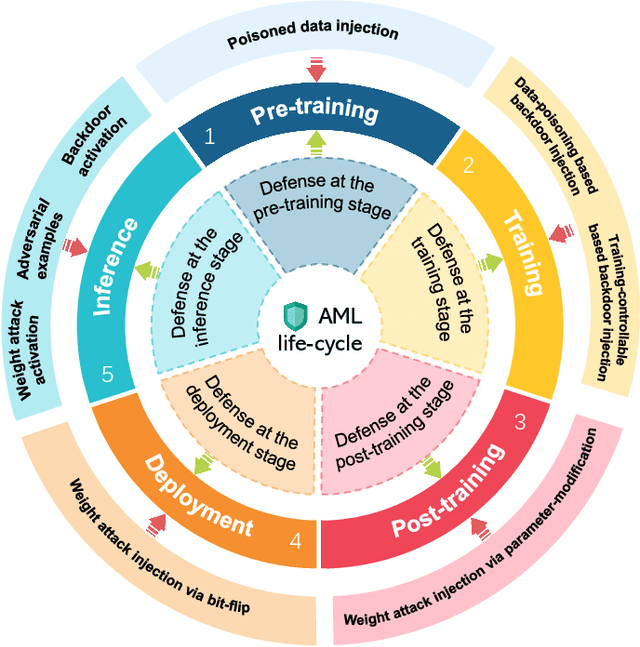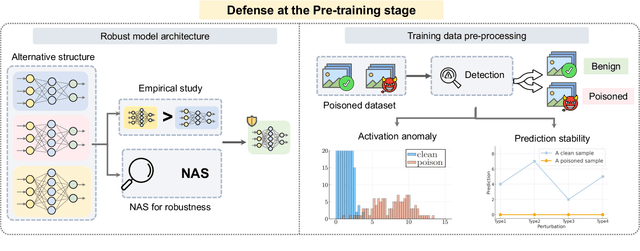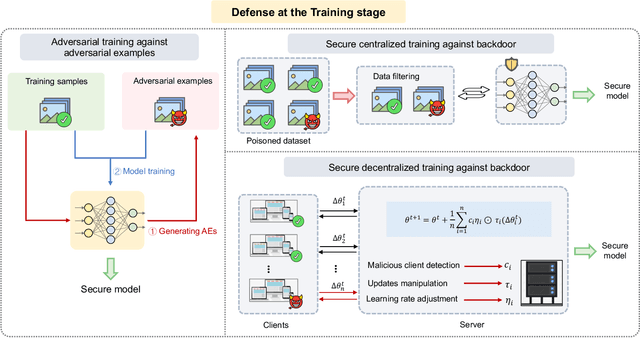Meixi Zheng
Defenses in Adversarial Machine Learning: A Survey
Dec 13, 2023



Abstract:Adversarial phenomenon has been widely observed in machine learning (ML) systems, especially in those using deep neural networks, describing that ML systems may produce inconsistent and incomprehensible predictions with humans at some particular cases. This phenomenon poses a serious security threat to the practical application of ML systems, and several advanced attack paradigms have been developed to explore it, mainly including backdoor attacks, weight attacks, and adversarial examples. For each individual attack paradigm, various defense paradigms have been developed to improve the model robustness against the corresponding attack paradigm. However, due to the independence and diversity of these defense paradigms, it is difficult to examine the overall robustness of an ML system against different kinds of attacks.This survey aims to build a systematic review of all existing defense paradigms from a unified perspective. Specifically, from the life-cycle perspective, we factorize a complete machine learning system into five stages, including pre-training, training, post-training, deployment, and inference stages, respectively. Then, we present a clear taxonomy to categorize and review representative defense methods at each individual stage. The unified perspective and presented taxonomies not only facilitate the analysis of the mechanism of each defense paradigm but also help us to understand connections and differences among different defense paradigms, which may inspire future research to develop more advanced, comprehensive defenses.
Learning to Re-weight Examples with Optimal Transport for Imbalanced Classification
Aug 05, 2022



Abstract:Imbalanced data pose challenges for deep learning based classification models. One of the most widely-used approaches for tackling imbalanced data is re-weighting, where training samples are associated with different weights in the loss function. Most of existing re-weighting approaches treat the example weights as the learnable parameter and optimize the weights on the meta set, entailing expensive bilevel optimization. In this paper, we propose a novel re-weighting method based on optimal transport (OT) from a distributional point of view. Specifically, we view the training set as an imbalanced distribution over its samples, which is transported by OT to a balanced distribution obtained from the meta set. The weights of the training samples are the probability mass of the imbalanced distribution and learned by minimizing the OT distance between the two distributions. Compared with existing methods, our proposed one disengages the dependence of the weight learning on the concerned classifier at each iteration. Experiments on image, text and point cloud datasets demonstrate that our proposed re-weighting method has excellent performance, achieving state-of-the-art results in many cases and providing a promising tool for addressing the imbalanced classification issue.
 Add to Chrome
Add to Chrome Add to Firefox
Add to Firefox Add to Edge
Add to Edge